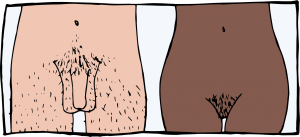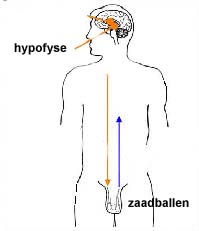puberty
 Before puberty we learn most of the skills that are necessary for everyday survival. Children, roughly speaking those under under twelve, can cope with most aspects of life. Between them, they can read and write, make bombs, argue and philosophise, fall in love, play all types of music, build a home, cheat and steal, drive and repair cars, sail a ship, programme a computer, take care of younger ones, set up and execute government, and have sex.
Before puberty we learn most of the skills that are necessary for everyday survival. Children, roughly speaking those under under twelve, can cope with most aspects of life. Between them, they can read and write, make bombs, argue and philosophise, fall in love, play all types of music, build a home, cheat and steal, drive and repair cars, sail a ship, programme a computer, take care of younger ones, set up and execute government, and have sex.
Puberty; the beginning of the reproductive ability
But there is one thing that children before puberty cannot do. They cannot make babies. So puberty is the beginning of an individual’s reproductive ability. The onset of puberty is marked by the first menstruation in girls and the first ejaculation in boys. These events are pre-programmed genetically, so under normal circumstances they take place in every boy and girl, following more or less similar pathways even though individual differences can be relatively great.
Girls reach puberty approximately 2 years earlier than boys. They start to grow between 8 and 12 years of age and finish around 16, boys start between 10 and 14 and finish around 17 or 18. The age of puberty in girls tends to go down, and over 5% of girls start breast development before they are 8 years old.
Puberty; secretion of hormones
The changes of puberty are sparked off by the secretion of hormones by the pituitary gland, located in the brain, which stimulates the reproductive organs (ovaries in girls, testicles in boys). The ovaries begin to release a ripened egg (ovum) each month, the testicles begin to produce sperm cells in great numbers. Ovaries and testicles produce sex hormones: estrogen in girls, testosterone in boys. These cause the changes that are characteristic of puberty: increase in length and weight, lowering of the voice, hair growth in the armpits, pubic hair on the lower abdomen and beard growth in the boy’s face. Girls start to menstruate and develop breasts, boys start ejaculating.
These events must not be confused with the onset of sexual feeling or the ability to have orgasms. In most people, these feelings occur at a much earlier date. Most boys and girls experience sexual arousal and orgasm long before puberty.
Puberty in primitive societies
The word ‘puberty’ is generally used only for the changes that takes place around age 10-15. These very young people are usually not ready to make babies. The reproductive system is not yet fully developed or operational, nor are these youngsters, with their own needs unfulfilled, fully capable of being good parents. In primitive societies, however, the period between childhood and adulthood is very short, and does not extend much beyond puberty. Initiation rites, which make a boy a man (a girl becomes a woman when she menstruates) are followed by arranged marriages and child bearing. This is still a serious social issue in many of the undeveloped parts of the world, where poverty, lack of education and religious tradition imprison young people in a reproductive life cycle that offers little opportunity beyond the naked struggle for survival.
Puberty in modern societies
In more modern societies, the whole period between childhood and adulthood has been lengthened beyond puberty and is called adolescence. Industrial and social development, increased wealth, new ideas, birth control, education, and other factors, have resulted in the postponement of reproduction, so that now the period between childhood and parenthood extends beyond teenage. Adolescence in many western countries can now actually last till the age of thirty.
Of course, evolution still means the development from older structures into newer ones while the older ones continue to exist. The behaviour patterns learned in childhood will persist during puberty and partly determine how we respond to new situations and challenges. We add new functions, skills and responses to our repertoire of behaviour as long as we continue to learn, but what we learned in our early years directs our primary responses and continues to influence strongly what we learn later in life.

